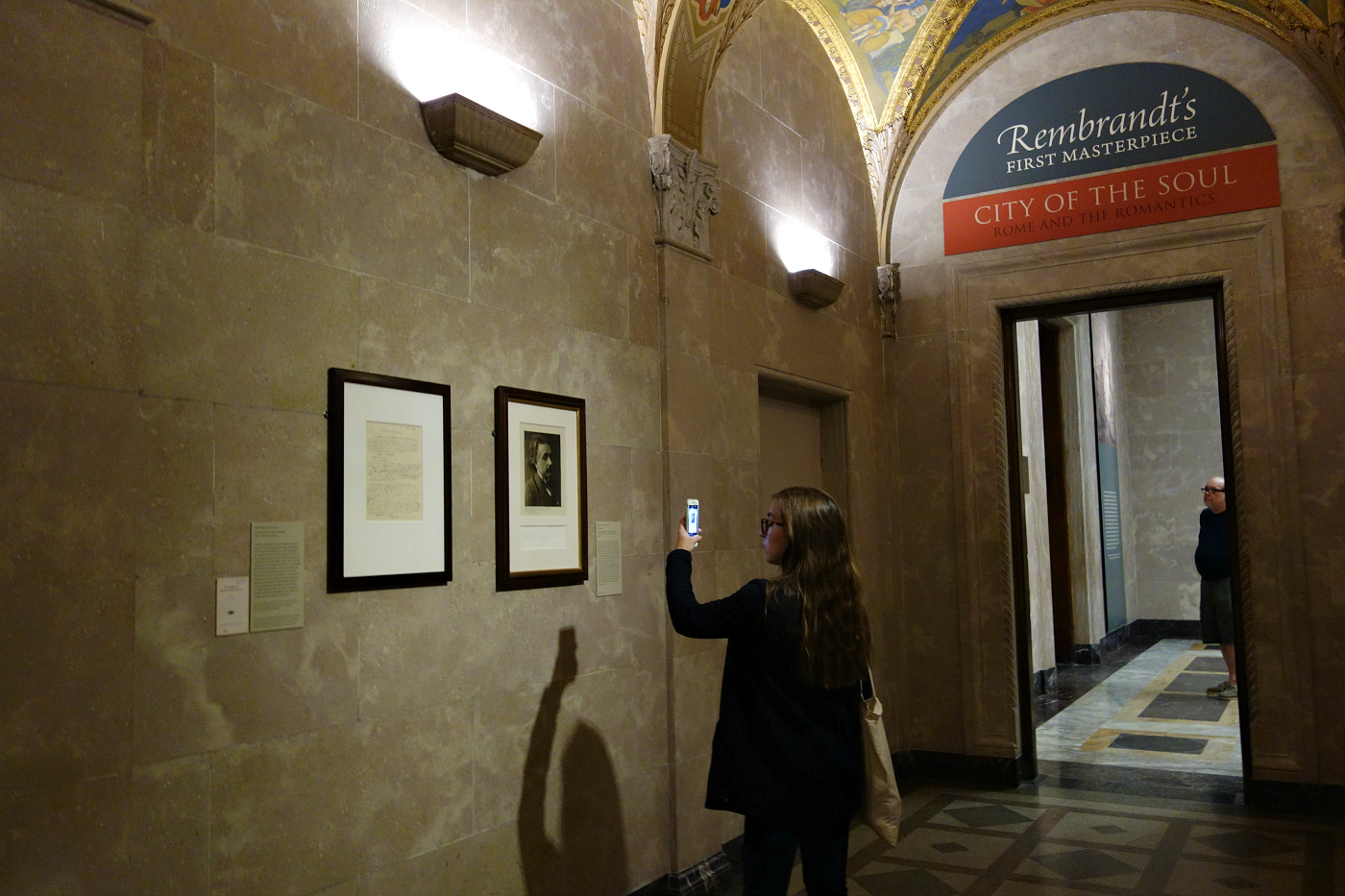
Installation view of ‘Celebrating 100 Years of Einstein’s General Theory’ at the Morgan Library & Museum (photo by the author for Hyperallergic)
A century has passed since Albert Einstein published his general theory of relativity, which at its core demonstrates that space and time are connected, and both involved in gravity. The knowledge that large bodies, such as our own Earth, warp space-time has impacted the design of everyday things like GPS and led to excitement over this past February’s detection of gravitational waves predicted by his 1916 theory. To mark the centennial, the Morgan Library & Museum in Manhattan has organized Celebrating 100 Years of Einstein’s General Theory, a display of archival material related to the great German physicist.

Herman Mishkin’s 1921 photograph of Albert Einstein, signed and inscribed by Einstein (courtesy private collection) (click to enlarge)
The Morgan has a collection of Einstein-related ephemera that includes correspondence and manuscripts, including the draft of an article about the general theory of relativity which Einstein was writing for the journal Nature. It begins: “[On 7 January 1907] there came to me the most fortunate thought of my life.” It was one that would be integral to our understanding of physics.
Celebrating 100 Years features a 1919 letter written by Einstein to German astronomer Erwin Finlay Freundlich — one of 25 letters passed between the two that are now at the Morgan — discussing Freundlich’s unsuccessful attempts to affirm the theory with his astronomical observations. Alongside this are two pieces, framed together, from a private collection: a 1921 photograph by Herman Mishkin of Einstein in profile and a signed summation of E=mc2.
This formula, from his 1905 special theory of relativity, preceded the general theory and gave rise to both nuclear power and atomic bombs. Sixteen years after he synthesized it, Einstein was awarded the Nobel Prize for Physics and traveled to the United States on a speaking tour, which included his first visit to New York to raise funds for the new Hebrew University in Jerusalem. At the time of Mishkin’s portrait, he was becoming a household name, while his theories were set to reverberate throughout the coming world war and the rise of nuclear weapons.

Albert Einstein’s autographed manuscript of E=mc2 (signed and dated February 1921) (courtesy private collection) (click to enlarge)
The Morgan Library regularly mounts thoughtful, full-scale exhibitions, but it really excels at showcasing singular (or, in this case, three small) objects. A calligraphic manuscript of the Preamble of the Charter of the United Nations by Hermann Zapf was recently installed in a stairway alcove to honor the passing of the typeface designer, while other intriguing pieces like the 9th-century jewel-covered Lindau Gospels and an 1880 silver binding by Tiffany have been on view in the East Room. The Einstein display is diminutive, but it adds tactile depth to this historic figure, reminding visitors of the importance of his scientific theories that guide our knowledge of the universe.

Albert Einstein’s Letter to Erwin Finlay Freundlich (after December 15, 1919) (courtesy the Morgan Library& Museum, Gift of Mr. Horace Wood Brock, Mr. John Biddle Brock, and Ms. Hope) (click to enlarge)

Installation view of ‘Celebrating 100 Years of Einstein’s General Theory’ at the Morgan Library & Museum (photo by the author for Hyperallergic)
Celebrating 100 Years of Einstein’s General Theory continues at the Morgan Library & Museum (225 Madison Avenue, Midtown East, Manhattan) through October 16.

No hay comentarios:
Publicar un comentario